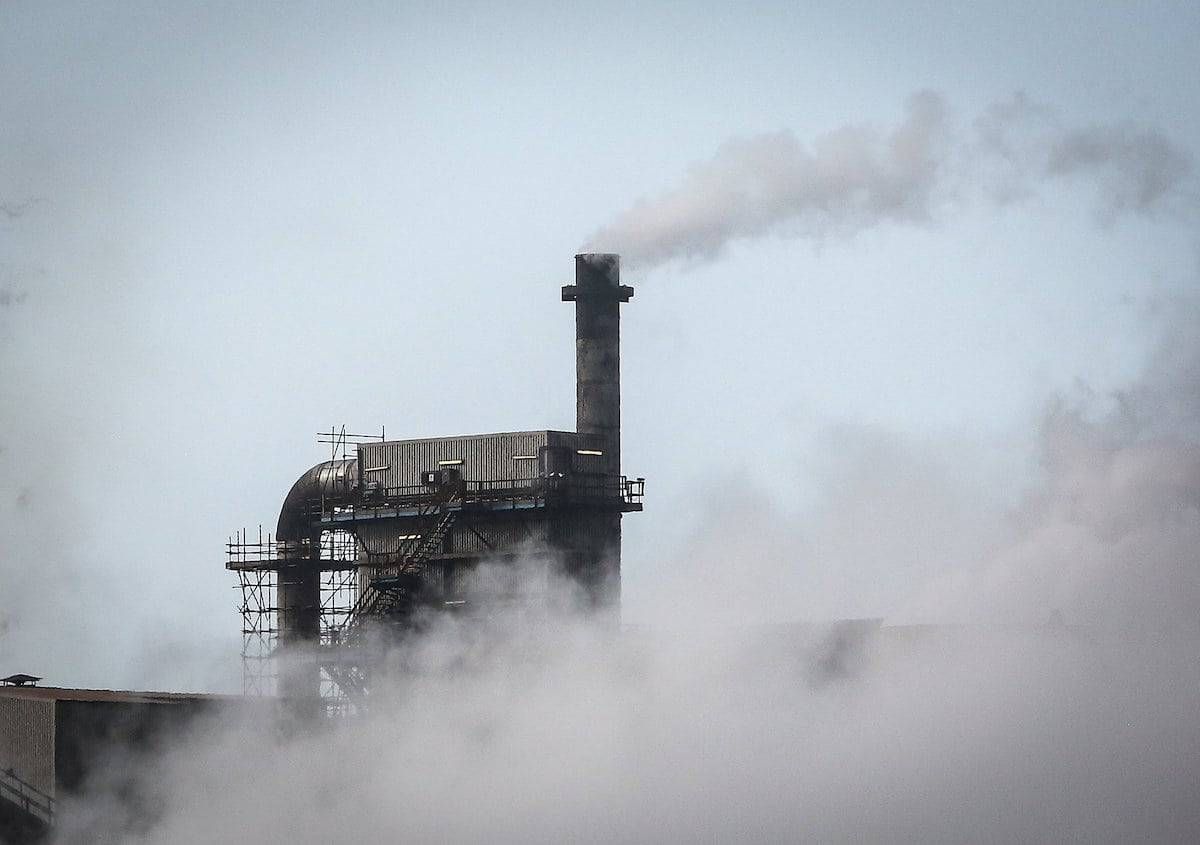
Bad ozone in the air has increased by 40 per cent since the industrial revolution, analysis of 150-year-old snow and ice has revealed.
The greenhouse gas is created when pollutants from cars and factories react with sunlight.
Now the first study of its kind, published in the journal Nature, has backed fears it’s fuelling the rise in asthma and other lung illnesses.
It’s based on ice cores and compressed snow from Antarctica and Greenland that contain a history of concentrations over more than 150 years.
Lead author Dr Laurence Yeung, of Rice University in the US, said: “We’ve been able to track how much ozone there was in the ancient atmosphere.
“This hasn’t been done before – and it’s remarkable we can do it at all.”
Ozone molecules do not remain trapped in ice and snow – but oxygen chemicals do.
So his team measured the amounts of two of these trapped in air bubbles.
Known a oxygen-16 and 18 isotopes respectively the production of ozone in the atmosphere changes their proportion.
The analysis showed the rise in ground level, or tropospheric, ozone since 1850 was around 40 per cent.
This is much smaller than the increases indicated by 19th Century observations – and consistent with the numbers predicted by computer models.
Dr Yeung said: “These results show today’s best models simulate ancient tropospheric ozone levels well.
“That bolsters our confidence in their ability to predict how tropospheric ozone levels will change in the future.
“These measurements constrain the amount of warming caused by anthropogenic ozone.”
The most recent report from the Intergovernmental Panel on Climate Change (IPCC) estimated ozone in Earth’s lower atmosphere today is contributing 0.4 watts per square metre of radiative forcing to the planet’s climate.
But the margin of error for that prediction was 50 per cent – or 0.2 watts per square metre.
Dr Yeung said: “That’s a really big error bar. Having better pre-industrial ozone estimates can significantly reduce those uncertainties.
“It’s like guessing how heavy your suitcase is when there’s a fee for bags over 50 pounds.
“With the old error bars, you’d be saying, ‘I think my bag is between 20 and 60 pounds.’ That’s not good enough if you can’t afford to pay the penalty.”
Most of Earth’s ozone is in the stratosphere, which is more than five miles above the planet’s surface.
This is sometimes called “good” ozone because it blocks most of the sun’s ultraviolet radiation, and is thus essential for life on Earth.
The rest of Earth’s ozone lies in the troposphere, closer to the surface. Here, ozone’s reactivity can be harmful to plants, animals and people.
It’s a primary component of urban smog, which forms near ground level in sunlit-driven reactions between oxygen and pollutants from motor vehicle exhaust.
The Environmental Protection Agency considers exposure to ozone levels greater than 70 parts per billion for eight hours or longer to be unhealthy.
Dr Yeung said: “The thing about ozone is scientists have only been studying it in detail for a few decades.
“We didn’t know why ozone was so abundant in air pollution until the 1970s. That’s when we started to recognise how air pollution was changing atmospheric chemistry. Cars were driving up ground-level ozone.”
While the earliest measurements of tropospheric ozone date to the late 19th century, those data conflict with the best estimates from today’s state-of-the-art atmospheric chemistry models.
Dr Yeung said: “Most of those older data are from starch-paper tests where the paper changes colors after reacting with ozone.
“The tests are not the most reliable – the colour change depends on relative humidity, for example – but they suggest, nevertheless, that ground-level ozone could have increased up to 300% over the past century.
“In contrast, today’s best computer models suggest a more moderate increase of 25 to 50 per cent. That’s a huge difference.
“There’s just no other data out there, so it’s hard to know which is right, or if both are right and those particular measurements are not a good benchmark for the whole troposphere.
“The community has struggled with this question for a long time. We wanted to find new data that could make headway on this unsolved problem.”
With the onset of industrialisation and the burning of fossil fuels around 1850, humans began adding more ozone to the lower atmosphere.
Dr Yeung said: “One of the most exciting aspects was how well the ice-core record matched model predictions.
“This was a case where we made a measurement, and independently, a model produced something that was in very close agreement with the experimental evidence.
“I think it shows how far atmospheric and climate scientists have come in being able to accurately predict how humans are changing Earth’s atmosphere — particularly its chemistry.”
https://www.thelondoneconomic.com/news/microplastics-found-in-water-food-and-air-the-equivalent-of-eating-a-credit-card-a-week/12/06/